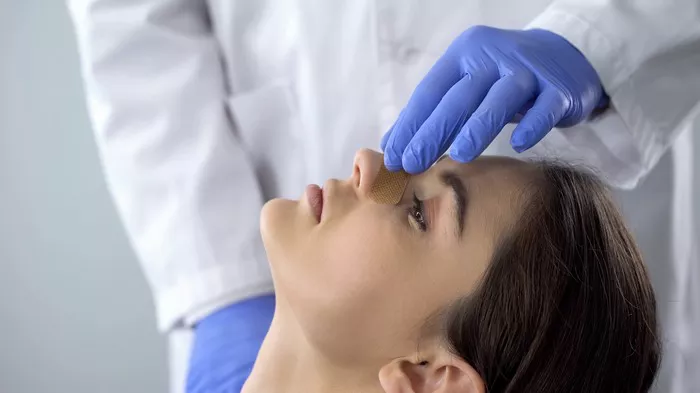Rhinoplasty, or nose surgery, is a cosmetic procedure that is designed to improve the appearance and function of the nose. It is a popular option for those who are unhappy with the shape, size, or symmetry of their nose. One of the most common concerns that patients have about rhinoplasty is whether it will leave scars. In this article, we will explore the different types of nose surgery, what to expect after rhinoplasty, and whether or not scars are a common side effect of the procedure.
Types of Nose Surgery
There are two main types of nose surgery: open and closed. In open rhinoplasty, a small incision is made in the skin between the nostrils, allowing the surgeon to lift the skin and access the underlying structures of the nose. This method is preferred for more complex cases, as it allows for greater visibility and control during the procedure. In closed rhinoplasty, all incisions are made inside the nose, which can make the recovery process quicker and less noticeable. This method is typically used for less complex cases, such as a reduction in the size of the nose.
What to Expect After Rhinoplasty
After nose surgery, it is common to experience some swelling, bruising, and discomfort. You may also have a splint or packing in your nose to support the healing process. It is important to follow your surgeon’s post-operative instructions carefully to ensure a successful recovery. This may include taking pain medication, avoiding strenuous activities, and keeping your head elevated to reduce swelling. Most patients can return to work and other activities within one to two weeks, but it may take several months for the full results of the procedure to be visible.
Does Nose Surgery Leave Scars?
While all surgical procedures carry some risk of scarring, the goal of rhinoplasty is to minimize visible scarring as much as possible. In open rhinoplasty, the small incision is typically made in a natural crease between the nostrils, which can help to conceal any resulting scar. In closed rhinoplasty, all incisions are made inside the nose, which means that no visible scarring should occur. Your surgeon will take great care to ensure that the incisions are made in a way that minimizes the risk of scarring and promotes optimal healing.
In rare cases, some patients may experience hypertrophic scarring, which is an overgrowth of scar tissue that can be more noticeable than the surrounding skin. This can be treated with corticosteroid injections or other scar reduction treatments.
How to Minimize Scarring after Rhinoplasty
While it is impossible to completely eliminate scarring after rhinoplasty, there are steps you can take to help minimize its appearance. Here are a few tips:
- Follow your surgeon’s post-operative instructions: Your surgeon will give you detailed instructions on how to care for your nose after surgery. Following these instructions carefully can help promote proper healing and minimize scarring.
- Avoid smoking: Smoking can slow down the healing process and increase the risk of scarring.
- Protect your nose from the sun: Exposure to the sun can cause the scar tissue to darken and become more noticeable. It’s important to wear a hat and sunscreen with at least SPF 30 to protect your nose from the sun.
- Use scar creams or silicone sheets: Your surgeon may recommend using a scar cream or silicone sheets to help reduce the appearance of scarring.
- Be patient: Scarring can take several months to fully heal and fade. Be patient and give your body the time it needs to heal properly.
Conclusion
Rhinoplasty is a popular cosmetic procedure that can improve the appearance and function of the nose. While all surgical procedures carry some risk of scarring, the goal of nose surgery is to minimize visible scarring as much as possible. Your surgeon will take great care to ensure that incisions are made in a way that promotes optimal healing and minimizes the risk of scarring. With proper care and follow-up, most patients can enjoy the benefits of nose surgery without any visible scarring.

